Sensor Fusion and Smart Sensor in Sports and Biomedical Applications
Abstract
:1. Introduction
2. Sports
2.1. Application in Athletics
2.2. Application in Swimming
2.3. Application in Cycling
2.4. Ball and Puck Sports
2.4.1. Applications in Football (Soccer)
2.4.2. Applications in Basketball
2.4.3. Applications in Sports with Protective Equipment
2.5. General Applications
3. Applications between Sports and Biomedical Areas
3.1. Plantar Pressure
3.2. Muscle Activity
3.3. Posture and Ergonomics
4. Biomedical Applications
4.1. Patients Monitoring in a Hospital/Clinical Environment
4.2. Rehabilitation
4.3. Monitoring and Diagnostics Aid
4.4. Other Applications
5. Conclusions
Acknowledgments
Author Contributions
Conflicts of Interest
References
- Luo, C.R.; Chang, C.C.; Lai, C.C. Multisensor fusion and integration: Theories, applications, and its perspectives. IEEE Sens. J. 2011, 11, 3122–3138. [Google Scholar] [CrossRef]
- Takahashi, K.; Yamasaki, H. Audio-Visual Sensor Fusion System for Intelligent Sound Sensing. In The Industrial Electronics Handbook; Irwin, D., Ed.; CRC Press: Boca Raton, FL, USA, 1997; pp. 1609–1615. [Google Scholar]
- Luo, C.R.; Chang, C.-C. Multisensor fusion and integration: A review on approaches and its applications in mechatronics. IEEE Trans. Ind. Inf. 2012, 8, 49–60. [Google Scholar] [CrossRef]
- Aziz, A.M. A New Adaptive Decentralized Soft Decision Combining Rule for Distributed Sensor Systems with Data Fusion. Inf. Sci. 2014, 256, 197–210. [Google Scholar] [CrossRef]
- Dasarathy, B.V. Sensor Fusion Potential Exploitation—Innovative Architectures and Illustrative Applications. IEEE Proc. 1997, 85, 24–38. [Google Scholar] [CrossRef]
- 1451.5-2007-IEEE Standard for a Smart Transducer Interface for Sensors and Actuators Wireless Communication Protocols and Transducer Electronic Data Sheet (TEDS) Formats. Available online: http://ieeexplore.ieee.org/stamp/stamp.jsp?tp=&arnumber=4346346 (accessed on 12 December 2015).
- Chaudhari, M.; Draravath, S. Study of Smart Sensors and their Applications. Int. J. Adv. Res. Comput. Commun. Eng. 2014, 3, 5031–5034. [Google Scholar]
- Yurish, S.Y. Smart sensors for electrical and non-electrical, physical and chemical variables: State of the art. In Smart Sensors and MEMS; Yurish, S.Y., Gomes, M.T.S.R., Eds.; Kluwer Academic Publishers: Houten, The Netherlands, 2003; pp. 1–50. [Google Scholar]
- Frank, R. Understanding Smart Sensors, 2nd ed.; Artech House: Norwood, MA, USA, 2000; pp. 1–16. [Google Scholar]
- Singh, V.R. Smart sensors: Physics, technology and applications. Indian J. Pure Appl. Phys. 2005, 43, 7–16. [Google Scholar]
- Magno, M.; Benini, L.; Gaggero, L.; La Torre Aro, J.P.; Popovici, E. A versatile biomedical wireless sensor node with novel drysurface sensors and energy efficient power management. In Proceedings of the 5th IEEE International Workshop on Advances in Sensors and Interfaces, Bari, Italy, 13–14 June 2013; pp. 217–222.
- Harms, H.; Amft, O.; Winkler, R.; Schumm, J.; Kusserow, M.; Troester, G. ETHOS: Miniature orientation sensor for wearable human motion analysis. In Proceedings of the 2010 IEEE Sensors, Hona, HI, USA, 1–4 November 2010; pp. 1037–1042.
- Hunter, A.; Coggan, A.R. Training and Racing with a Power Meter, 2nd ed.; Velopress: Boulder, CO, USA, 2010. [Google Scholar]
- Siirtola, P.; Laurinen, P.; Röning, J.; Kinnunen, H. Efficient accelerometer-based swimming exercise tracking. In Proceedings of the 2011 IEEE Symposium on Computational Intelligence and Data Mining, Paris, France, 11–15 April 2011; pp. 156–161.
- Zagatto, A.M.; Beck, W.R.; Gobatto, C. Vality of the Running Anaerobic Sprint Test for Assessing Anaerobic Power Predicting Short-Distance Performance. J. Strength Cond. Res. 2009, 23, 1820–1827. [Google Scholar] [CrossRef] [PubMed]
- Ishido, H.; Takahashi, H.; Nakai, A.; Takahata, T.; Matsumoto, K.; Shimoyama, I. 6-Axis force/torque sensor for spike pins of sports shoes. In Proceedings of the 2015 8th IEEE International Conference on Micro Electro Mechanical Systems, Estoril, Portugal, 18–22 January 2015; pp. 257–260.
- Rodrigues, J.R.; Craveiro, W.A.; Lemos, T.V.; Passos, F.A.G.; de Macedo, O.G.; Matheus, J.P.C. Influence of application of the inelastic taping in plantar pressure of runners pronators. Man. Ther. Posturol. Rehabil. J. 2014, 12, 224–260. [Google Scholar] [CrossRef]
- Jung, P.-G.; Lim, G.; Kong, K. A Mobile Motion Capture System Based On Inertial Sensors and Smart Shoes. In Proceedings of the 2013 IEEE International Conference on Robotics and Automation, Karlsruhe, Germany, 6–10 May 2013; pp. 692–697.
- Xu, J.Y.; Nan, X.; Ebken, V.; Wang, Y.; Pottie, G.J.; Kaiser, W.J. Integrated Inertial Sensors and Mobile Computing for Real-Time Cycling Performance Guidance via Pedaling Profile Classification. IEEE J. Biomed. Health Inf. 2015, 19, 440–445. [Google Scholar] [CrossRef] [PubMed]
- Fuss, F.K. Instrumentation Technology: Instrumentation of Sports Equipment. In Routledge Handbook of Sports Technology and Engineering; Fuss, F.K., Subic, A., Strangwood, M., Mehta, R., Eds.; Taylor & Francis Group: New York, NY, USA, 2014; pp. 31–35. [Google Scholar]
- Azcueta, J.P.V.; Libatique, N.C.; Tangonan, G.L. In situ sports performance analysis system using inertial measurement units, high-fps video camera, and the Android platform. In Proceedings of the 2014 International Conference on Humanoid, Nanotechnology, Information Technology, Communication and Control Environment and Management, Palawan, Phillipines, 12–16 November 2014; pp. 1–6.
- Kaiut, J.P.; da Silva, A.I.; do Nascimento, A.J. Análise do desempenho dos atletas nas provas combinadas no período de 2000 a 2012. Rev. Bras. Prescr. Fisiol. Exerc. 2014, 8, 172–182. [Google Scholar]
- Senanayake, C.; Senanayake, S.M.N.A. Human assisted tools for gait analysis and intelligent gait phase detection. In Proceedings of the 2009 Innovative Technologies in Intelligent Systems and Industrial Applications, Monash, Malaysia, 25–26 July 2009; pp. 230–235.
- Fei, X.; Mo, P.; Liu, G. Development of foot surface pressure distribution measurement system for the training of soccer players. In Proceedings of the 2013 Intelligent Control and Information Processing, Beijing, China, 9–11 June 2013; pp. 1–5.
- Sobral, H.; Vieira, A.; Ferreira, J.P.; Ferreira, P.; Cruz, S.; Crisóstomo, M.; Coimbra, A.P. Human gait analysis using instrumented shoes. In Proceedings of the 2015 IEEE 4th Portuguese Meeting on Bioengineering, Porto, Portugal, 26–28 February 2015.
- Sun, N.; Liu, X.; Wu, X.; Wang, H. Human gait modeling and gait analysis based on Kinect. In Proceedings of the 2014 IEEE International Conference on Robotics and Automation, Hong Kong, China, 31 May–7 June 2014; pp. 3173–3178.
- Nukala, B.; Shibuya, N.; Rodriguez, A.; Tsay, J.; Nguyen, T.; Zupanic, S.; Lie, D.Y.C. Comparing nape vs. T4 placement for a mobile Wireless Gait Analysis sensor using the Dynamic Gait Index test. In Proceedings of the 2015 Eighth International Conference on Mobile Computing and Ubiquitous Networking, Hakodate, Japan, 20–22 January 2015; pp. 68–69.
- Salarian, A.; Burkhard, P.R.; Vingerhoets, F.J.; Jolles, B.M.; Aminian, K. A novel approach to reducing number of sensing units for wearable gait analysis systems. IEEE Trans. Biomed. Eng. 2013, 60, 72–77. [Google Scholar] [CrossRef] [PubMed]
- Wang, B.; Rajput, K.S.; Tam, W.-K.; Tung, A.K.H.; Yang, Z. FreeWalker: A smart insole for longitudinal gait analysis. In Proceedings of the 2015 37th Annual International Conference of the IEEE Engineering in Medicine and Biology Society, Milan, Italy, 25–29 August 2015; pp. 3723–3726.
- De Lima, J.J.; Martins, M.S.R.; Schleder, J.C.; Okida, S.; Stevan, S.L., Jr. Dispositivo para análise dinâmica da marcha humana utilizando sensores inerciais MEMS. Rev. Engenharia Tecnol. 2013, 5, 122–131. [Google Scholar]
- International Association of Athletics Federations. Available online: http://www.iaaf.org/disciplines (accessed on 23 February 2015).
- Daukantas, S.; Marozas, V.; Lukosevicitus, A. Inertial sensor for objective evaluation of swimmer performance. In Proceedings of the 2008 11th International Biennial Baltic Electronics Conference, Tallinn, Estonia, 6–8 October 2008; pp. 321–324.
- Sheaffer, D.A.; Burnett, D.C. Improved surface swimmer detection through multimodal data fusion. In Proceedings of the 2012 IEEE International Carnahan Conference on Security Technology, Boston, MA, USA, 15–18 October 2012; pp. 292–296.
- De Magalhaes, F.A.; Vannozzi, G.; Gatta, G.; Fantozzi, S. Wearable inertial sensors in swimming motion analysis: A systematic review. J. Sports Sci. 2014, 33, 732–745. [Google Scholar] [CrossRef] [PubMed]
- Rowlands, D.D.; James, D.A.; Lee, J.B. Visualization of wearable sensor data during swimming for performance analysis. Sport Technol. 2013, 6, 130–136. [Google Scholar] [CrossRef]
- Gong, M.; Zhang, L.; Ding, Z.; Dong, F.; Wang, L. Research and development of swimming training information system based on ZigBee technology. In Proceedings of the 2012 International Conference on Systems and Informatics, Yantai, China, 19–20 May 2012; pp. 966–970.
- Khoo, B.H.; Lee, K.J.; Senanayake, S.M.N.A.; Wilson, B.D. System for determining within-stroke variations of speed in swimming (SWiSS). In Proceedings of the 2009 IEEE/ASME International Conference on Advanced Intelligent Mechatronics, Singapore, 14–17 July 2009; pp. 1927–1932.
- Dadashi, F.; Crettenand, F.; Millet, G.; Seifert, L.; Komar, J.; Aminian, K. Frontcrawl propulsive phase detection using inertial sensors. Port. J. Sport Sci. 2011, 11, 855–858. [Google Scholar]
- Carneiro, D.D.A.; Stevan, S.L. Sistema microcontrolado para treinos de natação com interface Android. In Proceedings of the Conferência Ibero Americana em Computação Aplicada, Florianópolis, Brazil, 30 November–1 December 2015; pp. 1–9.
- Chakravorti, N.; Sage, T.L.; Slawson, S.E.; Conway, P.P.; West, A.A. Design and Implementation of an Integrated Performance Monitoring Tool for Swimming to Extract Stroke Information at Real Time. IEEE Trans. Hum. Mach. Syst. 2013, 43, 199–213. [Google Scholar] [CrossRef]
- Ride, J.; Ringuet, C.; Rowlands, D.; Lee, J.; James, D. A Sports Technology Needs Assessment for Performance Monitoring in Swimming. Proc. Eng. 2013, 60, 442–447. [Google Scholar] [CrossRef]
- Babayan, J.; Hommaid, M.; Hage-Diab, A.; Abdulnabi, S. Low-cost dry swimming machine using Kinect biomotion capture. In Proceedings of the Low-Cost Dry Swimming Machine Using Kinect Biomotion Capture, Beirut, Lebanon, 18–16 September 2015; pp. 282–284.
- Hagem, R.M.; Thiel, D.V.; O’Keefee, S.; Fickenscher, T. Real-time swimmers’ feedback based on smart infrared (SSIR) optical wireless sensor. Electron. Lett. 2013, 49, 1–2. [Google Scholar] [CrossRef]
- Bächlin, M.; Tröster, G. Swimming performance and technique evaluation with wearable acceleration sensors. Pervasive Mob. Comput. 2012, 8, 68–81. [Google Scholar] [CrossRef]
- Sage, T. L.; Conway, P.; Justham, L.; Slawson, S.; Bindel, A.; West, A. A component based integrated system for signal processing of swimming performance. In Proceedings of the 2010 International Conference on Signal Processing and Multimedia Applications, Athens, Greece, 26–28 July 2010; pp. 73–79.
- Hagem, R.M.; Thiel, D.V.; O’Keefe, S.G.; Dahm, N.; Stamm, A.; Fickenscher, T. Smart optical wireless sensor for real time swimmers feedback. In Proceedings of the 2012 IEEE Sensors, Taipei, Taiwan, 28–31 October 2012; pp. 1–4.
- Gharghan, S.K.; Nordin, R.; Ismail, M. Empirical investigation of pedal power calculation techniques for track cycling performance measurement. In Proceedings of the 2013 IEEE Student Conference on Research and Development, Putrajaya, Malaysia, 16–17 December 2013; pp. 48–53.
- Friel, J. The Power Meter Handbook: A User’s Guide for Cyclists and Triathletes; Velopress: Boulder, CO, USA, 2012. [Google Scholar]
- Zhang, Y.; Beenakker, K.G.M.; Butala, P.M.; Lin, C.-C.; Little, T.D.C.; Maier, A.B.; Stijntjes, M.; Vartanian, R.; Wagenaar, R.C. Monitoring walking and cycling of middle-aged to older community dwellers using wireless wearable accelerometers. In Proceedings of the 2012 Annual International Conference of the IEEE Engineering in Medicine and Biology Society, San Diego, CA, USA, 28 August–1 September 2012; pp. 158–161.
- Cockcroft, J.; Muller, J.H.; Scheffer, C. A Novel Complementary Filter for Tracking Hip Angles during Cycling Using Wireless Inertial Sensors and Dynamic Acceleration Estimation. IEEE Sens. J. 2014, 14, 2864–2871. [Google Scholar] [CrossRef]
- Zhang, Y.; Chen, K.; Yi, J. Rider Trunk and Bicycle Pose Estimation with Fusion of Force/Inertial Sensors. IEEE Trans. Biomed. Eng. 2013, 60, 2541–2551. [Google Scholar] [CrossRef] [PubMed]
- Neto, W.R. Automatic arbitration to help a referee in soccer matches. Rev. Technoeng. 2013, 8, 19–24. (In Portuguese) [Google Scholar]
- Shan, P.; Muchhala, R.; Shan, G. A Review Paper on Goal-Line Technology. Int. J. Curr. Eng. Technol. 2014, 4, 3387–3390. [Google Scholar]
- Maarslet, H.P. Goal Detector for Detection of an Object Passing a Goal Plane. U.S. Patent 8844933 B2, 30 September 2014. [Google Scholar]
- Psiuk, R.; Seidl, T.; Strauß, W.; Bernhard, J. Analysis of Goal Line Technology from the Perspective of an Electromagnetic Field based Approach. Proc. Eng. 2014, 74, 279–284. [Google Scholar] [CrossRef]
- Wakabayashi, S.; Ashida, K.; Todoroki, S.; Koide, K. Development of a multi-purpose display and a timer for athletics. In Proceedings of the 2014 IEEE 3rd Global Conference on Consumer Electronics, Tokyo, Japan, 7–10 October 2014; pp. 174–177.
- Redvka, P.E. Estudo Correlacional Entre Variáveis Fisiológicas e da Composição Corporal com a Demanda de Movimentação e Velocidades de Deslocamento durante o Jogo de Futebol. Master’s Thesis, Federal University of Paraná, Paraná, Brazil, March 2014. [Google Scholar]
- Rupcic, T.; Knjaz, D.; Bakovic, M.; Devrnja, A.; Matkovic, B.R. Impact of fatigue on accuracy and changes in certain kinematic parameters during shooting in basketball. Hrvatski Športskomedicinski Vjesnik 2015, 30, 15–20. [Google Scholar]
- Taniguchi, A.; Watanabe, K.; Kurihara, Y. Measurement and analyze of jump shoot motion in basketball using a 3-D acceleration and gyroscopic sensor. In Proceedings of the SICE Annual Conference, Akita, Japan, 20–23 August 2012; pp. 361–365.
- Abdelrasoul, E.; Mahmoud, I.; Stergiou, P.; Katz, L. The Accuracy of a Real Time Sensor in an Instrumented Basketball. Proc. Eng. 2015, 112, 202–206. [Google Scholar] [CrossRef]
- Toledo, L.C.S. Avaliação das Variáveis Técnicas no Contexto Esportivo. Bachelor’s Thesis, Paulista State University, São Paulo, Brazil, November 2014. [Google Scholar]
- Alwadi, A.M.H.S. Collision Monitoring and Alarm in Ice-Hokey. Master’s Thesis, Aalto University School of Science and Technology, Helsinki, Finland, March 2014. [Google Scholar]
- Crisco, J.J.; Fiore, R.; Beckwith, J.G.; Chu, J.J.; Brolinson, P.G.; Duma, S.; McAllister, T.W.; Duhaime, A.C.; Greenwald, R.W. Frequency and location of head impact exposures in individual collegiate football players. J. Athl. Train. 2010, 45, 549–559. [Google Scholar] [CrossRef] [PubMed]
- Mihalik, J.P.; Guskiewicz, K.M.; Marshall, S.W.; Blackburn, J.T.; Cantu, R.C.; Greenwald, R.W. Head impact biomechanics in youth hockey: Comparisons across playing position, event types, and impact locations. Ann. Biomed. Eng. 2012, 40, 141–149. [Google Scholar] [CrossRef] [PubMed]
- Crisco, J.J.; Wilcox, B.J.; Beckwith, J.G.; Chu, J.J.; Duhaime, A.C.; Maerlender, A.C.; McAllister, T.W.; Greenwald, R.M. Head impact exposure in collegiate football players. J. Biomech. 2011, 44, 2673–2678. [Google Scholar] [CrossRef] [PubMed]
- Wilcox, B.J.; Beckwith, J.G.; Greenwald, R.W.; Chu, J.J.; McAllister, T.W.; Flashman, L.A.; Maerlender, A.C.; Duhaime, A.C.; Crisco, J.J. Head impact exposure in male and female collegiate ice hockey players. J. Biomech. 2013, 47, 109–114. [Google Scholar] [CrossRef] [PubMed]
- Beckwith, J.G.; Greenwald, R.M.; Chu, J.J.; Crisco, J.J.; Rowson, S.; Duma, S.M.; Broglio, S.P.; McAllister, T.W.; Guskiewicz, K.M.; Mihalik, J.P.; et al. Head Impact Exposure Sustained by Football Players on Days of Diagnosed Concussion. Sports Exerc. 2013, 45, 737–746. [Google Scholar] [CrossRef] [PubMed]
- Daniel, R.W.; Rowson, S.; Duma, S.M. Head Impact Exposure in Youth Football. Ann. Biomed. Eng. 2012, 40, 976–981. [Google Scholar] [CrossRef] [PubMed]
- Greenwald, R.M.; Gwin, J.T.; Chu, J.J.; Crisco, J.J. Head impact severity measures for evaluating mild traumatic brain injury risk exposure. Neurosurgery 2008, 62, 789–798. [Google Scholar] [CrossRef] [PubMed]
- Crisco, J.J.; Wilcox, B.J.; Machan, J.T.; McAllister, T.W.; Duhaime, A.C.; Duma, S.M.; Rowson, S.; Beckwith, J.G.; Chu, J.J.; Greenwald, R.M. Magnitude of Head Impact Exposures in Individual Collegiate Football Players. J. Appl. Biomechan. 2012, 28, 174–183. [Google Scholar] [CrossRef]
- Mertz, L. Making Sports Safer for Kids: Using Biomechanical Devices to Prevent Injuries. IEEE Pulse 2013, 4, 18–21. [Google Scholar] [CrossRef] [PubMed]
- Hardegger, M.; Ledergerber, B.; Mutter, S.; Vogt, C.; Seiter, J.; Calatroni, A.; Tröster, G. Sensor Technology for Ice Hockey and Skating. In Proceedings of the IEEE 12th International Conference on Wearable and Implantable Body Sensor Networks, Cambridge, MA, USA, 9–12 June 2015; pp. 1–6.
- Vales-Alonso, J.; Chavez-Diéguez, D.; Lópes-Matencio, P.; Acaraz, J.J.; Parrado-García, F.J.; González-Castaño, J. SAETA: A Smart Coaching Assistant for Professional Volleyball Training. IEEE Trans. Syst. Man Cybern. Syst. 2015, 45, 1138–1150. [Google Scholar] [CrossRef]
- Can, Y.S.; Dönmez, M.Y. Sport Sense: A mobile sensor data collection, labeling and display application for sport centers. In Proceedings of the 2015 23rd Signal Processing and Communications Applications Conference, Malatya, Turkey, 16–19 May 2015; pp. 624–627.
- Supej, M. 3D measurements of alpine skiing with an inertial sensor motion capture suit and GNSS RTK system. J. Sports Sci. 2010, 28, 759–769. [Google Scholar] [CrossRef] [PubMed]
- Takano, K.; Li, K.F. A multimedia tennis instruction system: Tracking and classifying swing motions. Int. J. Space-Based Situat. Comput. 2013, 3, 155–168. [Google Scholar] [CrossRef]
- Clarke, S.R.; Norman, J.M. Optimal challenges in tennis. J. Oper. Res. Soc. 2012, 63, 1765–1772. [Google Scholar] [CrossRef]
- Spelmezan, D.; Borchers, J. Real-time Snowboard Training System. In Proceedings of the Conference on Human Factors in Computing Systems, Florence, Italy, 5–10 April 2008; pp. 3327–3332.
- Holleczek, T.; Rüegg, A.; Harms, H.; Tröster, G. Textile pressure sensors for sports applications. In Proceedings of the 2010 IEEE Sensors, Kona, HI, USA, 1–4 November 2010; pp. 732–737.
- Chi, E.H. Introducing Wearable Force Sensors in Martial Arts. IEEE Pervasive Comput. 2005, 4, 47–53. [Google Scholar] [CrossRef]
- Darius, D.D.I.; Ridzuan, S.J.; Deros, B.M.; Ramli, A.S. Female student-athletes’ biomechanics and anthropometric profile of unarmed combat kicks. In Proceedings of the 2014 IEEE Conference on Biomedical Engineering and Sciences, Kuala Lumpur, Malaysia, 8–10 December 2014; pp. 408–413.
- Lee, S.-B.; Cha, E.-J.; Lee, T.-S. Analysis of physical activities in Taekwondo Pumsae. In Proceedings of the 2008 30th Annual International Conference of the IEEE Engineering in Medicine and Biology Society, Vancouver, BC, Canada, 20–25 August 2008; pp. 5164–5167.
- Peng, L.; Yaping, Z. The Design and Realization of the Taekwondo Real-Time Hit Effect and Feedback System. In Proceedings of the 2015 2nd International Conference on Information Science and Control Engineering, Shanghai, China, 24–26 April 2015; pp. 946–950.
- Cricri, F.; Roininen, M.; Mate, S.; Leppännen, J.; Curcio, I.D.D.; Gabbouj, M. Multi-sensor fusion for sport genre classification of user generated mobile videos. In Proceedings of the 2013 IEEE International Conference on Multimedia and Expo, San Jose, CA, USA, 15–19 July 2013; pp. 1–6.
- Liu, S.; Gao, R.X.; John, D.; Staudenmayer, J.W.; Freedson, P.S. Multisensor Data Fusion for Physical Activity Assessment. IEEE Trans. Biomed. Eng. 2012, 59, 687–696. [Google Scholar] [PubMed]
- Razak, A.H.A.; Zayegh, A.; Begg, R.K.; Wahab, Y. Foot Plantar Pressure Measurement System: A Review. Sensors 2012, 12, 9884–9912. [Google Scholar] [CrossRef] [PubMed] [Green Version]
- Manupibul, U.; Charoensuk, W.; Kaimuk, P. Design and development of SMART insole system for plantar pressure measurement in imbalance human body and heavy activities. In Proceedings of the 2014 7th Biomedical Engineering International Conference, Fukuoka, Japan, 26–28 November 2014; pp. 1–5.
- Wafai, L.; Zayegh, A.; Woulfe, J.; Aziz, S.M.; Begg, R. Identification of Foot Pathologies Based on Plantar Pressure Asymmetry. Sensors 2015, 15, 20392–20408. [Google Scholar] [CrossRef] [PubMed]
- Catalfamo, P.; Moser, D.; Ghoussayni, S.; Ewins, D. Detection of gait events using an F-Scan in-shoe pressure measurement system. Gait Posture 2008, 28, 420–426. [Google Scholar] [CrossRef] [PubMed]
- Loss, J.F.; Cantergi, D.; Krumholz, F.M.; Torre, M.L.; Conditti, C.T. Evaluating the Electromyographical Signal during Symmetrical Load Lifting. Braz. J. Oral Sci. 2013, 9, 330–316. [Google Scholar]
- Holmberg, P.M. Weightlifting to Improve Volleyball Performance. Strength Cond. J. 2013, 35, 79–88. [Google Scholar] [CrossRef]
- Willick, S.E.; Cuschman, D.; Blauwet, C.A.; Emery, C.; Webborn, N.; Derman, W.; Schwellnis, M.; Stomphorst, J.; de Vliet, P.V. The epidemiology of injuries in powerlifting at the London 2012 Paralympic Games: An analysis of 1411 athlete-days. Scand. J. Med. Sci. Sports 2015. [Google Scholar] [CrossRef] [PubMed]
- Tao, W.; Lui, T.; Zheng, R.; Feng, H. Gait Analysis Using Wearable Sensors. Sensors 2012, 12, 2255–2283. [Google Scholar] [CrossRef] [PubMed]
- Curone, D.; Tognetti, A.; Secco, E.L.; Anania, G.; Carbonaro, N.; De Rossi, D.; Magenes, G. Heart Rate and Accelerometer Data Fusion for Activity Assessment of Rescuers During Emergency Interventions. IEEE Trans. Inf. Technol. Biomed. 2010, 14, 702–710. [Google Scholar] [CrossRef] [PubMed]
- Tang, Z.; Sekine, M.; Tamura, T.; Tanaka, N.; Yoshida, M.; Chen, W. Measurement and Estimation of 3D Orientation using Magnetic and Inertial Sensors. Adv. Biomed. Eng. 2015, 4, 135–143. [Google Scholar] [CrossRef]
- Alahakone, A.U.; Senanayake, S.M.N.A. A Real-Time System with Assistive Feedback for Postural Control in Rehabilitation. IEEE/ASME Trans. Mechatron. 2010, 15, 226–233. [Google Scholar] [CrossRef]
- Sardini, E.; Serpelloni, M.; Pasqui, V. Wireless Wearable T-Shirt for Posture Monitoring During Rehabilitation Exercises. IEEE Trans. Instrum. Meas. 2015, 64, 439–448. [Google Scholar] [CrossRef]
- Hong, Y.-J.; Kim, I.-J.; Ahn, S.C.; Kim, H.-G. Mobile health monitoring system based on activity recognition using accelerometer. Simul. Model. Pract. Theor. 2010, 18, 446–455. [Google Scholar] [CrossRef]
- Lu, Y.; Huang, J.; Xu, W.; Tao, C.; Wang, X. An Electronic Travel Aid based on multi-sensor fusion using extended Kalman filter. In Proceedings of the 2014 11th World Congress on Intelligent Control and Automation, Shenyang, China, 29 June–4 July 2014; pp. 25–30.
- Tognetti, A.; Lorussi, F.; Carbonaro, N.; de Rossi, D. Wearable Goniometer and Accelerometer Sensory Fusion for Knee Joint Angle Measurement in Daily Life. Sensors 2015, 15, 28435–28455. [Google Scholar] [CrossRef] [PubMed]
- Salarian, A.; Horak, F.B.; Zampiere, C.; Carlson-Kuhta, P.; Nutt, J.G.; Aminian, K. iTUG, a sensitive and reliable measure of mobility. IEEE Trans. Neural Syst. Rehabil. Eng. 2010, 18, 303–310. [Google Scholar] [CrossRef] [PubMed]
- Mcllwraith, D.; Pansiot, J.; Yang, G.-Z. Wearable and ambient sensor fusion for the characterisation of human motion. In Proceedings of the 2010 IEEE/RSJ International Conference on Intelligent Robots and Systems, Taipei, Taiwan, 18–22 October 2010; pp. 5505–5510.
- Majoe, D.; Bonhof, P.; Kaegi-Trachsel, T.; Gutknecht, J.; Widmer, L. Stress and sleep quality estimation from a smart wearable sensor. In Proceedings of the 2010 5th International Conference on Pervasive Computing and Applications, Maribor, Slovenia, 1–3 December 2010; pp. 14–19.
- Bartalesi, R.; Lorussi, F.; De Rossi, D.; Tesconi, M.; Tognetti, A. Wearable monitoring of lumbar spine curvature by inertial and e-textile sensory fusion. In Proceedings of the 2010 Annual International Conference of the IEEE Engineering in Medicine and Biology, Buenos Aires, Argentina, 31 August–4 September 2010; pp. 6373–6376.
- Antink, C.H.; Brüser, C.; Leonhardt, S. Multimodal sensor fusion of cardiac signals via blind deconvolution: A source-filter approach. In Proceedings of the Computing in Cardiology 2014, Cambridge, MA, USA, 7–10 September 2014; pp. 805–808.
- Lahat, D.; Adali, T.; Jutten, C. Multimodal Data Fusion: An Overview of Methods, Challenges, and Prospects. IEEE Proc. 2015, 103, 1449–1477. [Google Scholar] [CrossRef] [Green Version]
- Patel, S.; Park, H.; Bonato, P.; Chan, L.; Rodgers, M. A review of wearable sensors and systems with application in rehabilitation. J. Neuroeng. Rehabil. 2012, 9, 1–17. [Google Scholar]
- Potluri, C.; Anugolu, M.; Schoen, M.P.; Naidu, D.S.; Urfer, A.; Rieger, C. Computational intelligence based data fusion algorithm for dynamic sEMG and skeletal muscle force modelling. In Proceedings of the 2013 6th International Symposium on Resilient Control Systems, San Francisco, CA, USA, 13–15 August 2013; pp. 74–79.
- Murai, R.; Sakai, T.; Kitano, Y.; Honda, Y. Recognition of 3D dynamic environments for mobile robot by selective memory intake and release of data from 2D sensors. In Proceedings of the 2012 IEEE/SICE International Symposium on System Integration, Fukuoka, Japan, 16–18 December 2012; pp. 621–628.
- Moslem, B.; Khalil, M.; Diab, M.O.; Marque, C. Classification of multichannel uterine EMG signals by using a weighted majority voting decision fusion rule. In Proceedings of the 2012 16th IEEE Mediterranean Electrotechnical Conference, Yasmine Hammamet, Tunisia, 25–28 March 2012; pp. 331–334.
- González, F.C.; Villegas, O.O.; Ramiréz, D.E.; Sánchez, V.G.; Domínguez, H.O. Smart multi-level tool for remote patient monitoring based on a wireless sensor network and mobile augmented reality. Sensor 2014, 14, 17212–17234. [Google Scholar] [CrossRef] [PubMed]
- De Capua, C.; Meduri, A.; Morello, R. A Smart ECG Measurement System Based on Web-Service-Oriented Architecture for Telemedicine Applications. IEEE Trans. Instrum. Meas. 2010, 59, 2530–2538. [Google Scholar] [CrossRef]
- Venema, B.; Schiefer, J.; Blazek, V.; Blanik, N.; Leonhardt, S. Evaluating Innovative In-Ear Pulse Oximetry for Unobtrusive Cardiovascular and Pulmonary Monitoring During Sleep. IEEE J. Transl. Eng. Health Med. 2013, 1, 2168–2372. [Google Scholar] [CrossRef] [PubMed]
- Morello, R. Use of TEDS to Improve Performance of Smart Biomedical Sensors and Instrumentation. IEEE Sens. 2015, 15, 2497–2504. [Google Scholar] [CrossRef]
- Ponmozhi, J.; Frias, C.; Marques, T.; Frazão, O. Smart sensors/actuators for biomedical applications: Review. Measurements 2012, 45, 1675–1688. [Google Scholar] [CrossRef]
- Massot, B.; Risset, T.; Micheletm, G.; McAdams, E. A wireless, low-power, smart sensor of cardiac activity for clinical remote monitoring. In Proceedings of the 2015 17th International Conference on E-health Networking, Application & Services, Boston, MA, USA, 14–17 October 2015; pp. 488–494.
- Kelly, S.K.; Shire, D.B.; Chen, J.; Doyle, P.; Gingerich, M.D.; Cogan, S.F.; Drohan, W.A.; Behan, S.; Theogarajan, L.; Wyatt, J.L.; et al. A Hermetic Wireless Subretinal Neurostimulator for Vision Prostheses. IEEE Trans. Biomed. Eng. 2011, 58, 3197–3205. [Google Scholar] [CrossRef] [PubMed]
- Harsányi, G. Sensors in Biomedical Applications: Fundamentals, Technology and Applications; CRC Press: Boca Raton, FL, USA, 2000. [Google Scholar]
- Trigno TM Wireless EMG. Delsys, Wearable Sensors for Movement Sciences. Available online: http://www.delsys.com/products/wireless-emg/ (accessed on 1 February 2016).
- Mamun, K.A.; Sharma, A.; Hoque, A.S.M.; Szecsi, T. Remote patient physical condition monitoring service module for iWARD hospital robots. In Proceedings of the 2014 Asia-Pacific World Congress on Computer Science and Engineering, Nadi, Fiji, 4–5 November 2014; pp. 1–8.
- Sardino, E.; Serpelloni, M. T-Shirt for Vital Parameter Monitoring. Lect. Notes Electr. Eng. 2013, 162, 201–205. [Google Scholar]
- Kalatunga, T.N.; Ranasinghe, R.A.G.P.; Ranathunga, R.A.C.; Ratnayake, R.A.C.H.; Nanayakkara, N.D. Real time endoscope trajectory tracking in the 3D space using MEMS sensors. In Proceedings of the 2013 IEEE 8th International Conference on Industrial and Information Systems, Peradeniya, Sri Lanka, 17–20 December 2013; pp. 605–609.
- Mauro, E.D.; Solbiati, M.; Beni, S.D.; Forzoni, L.; D’Onofrio, S.; Solbiati, L. Virtual navigator real-time ultrasound fusion imaging with positron emission tomography for liver interventions. In Proceedings of the 2013 35th Annual International Conference of the IEEE Engineering in Medicine and Biology Society, Osaka, Japan, 3–7 July 2013; pp. 1406–1409.
- Appelbaum, L.; Solbiati, L.; Sosna, J.; Nissenbaum, Y.; Greenbaum, N.; Goldberg, S.N. Evaluation of an electromagnetic image-fusion navigation system for biopsy of small lesions: assessment of accuracy in an in vivo swine model. Acad. Radiol. 2013, 20, 209–217. [Google Scholar] [CrossRef] [PubMed]
- Honrado, C.; Dong, T. A Capacitive Touch Screen Sensor for Detection of Urinary Tract Infections in Portable Biomedical Devices. Sensors 2014, 14, 13851–13862. [Google Scholar] [CrossRef] [PubMed]
- Dwyer, G.; Giataganas, P.; Pratt, P.; Hughes, M.; Yang, G.-Z. A Miniaturised Robotic Probe for Real-Time Intraoperative Fusion of Ultrasound and Endomicroscopy. In Proceedings of the IEEE International Conference on Robotics and Automation, Seattle, WA, USA, 26–30 May 2015; pp. 1196–1201.
- Facchinetti, A.; Sparacino, G.; Guerra, S.; Luijf, Y.M.; DeVries, J.H.; Mader, J.K.; Ellmerer, M.; Benesch, C.; Heinemann, L.; Bruttomesso, D.; et al. Real-time improvement of continuous glucose monitoring accuracy: The smart sensor concept. Diabetes Care 2013, 36, 793–800. [Google Scholar] [CrossRef] [PubMed]
- Ahmadi, M.; Rajamani, R.; Timm, G.; Sezen, A.S. Flexible Distributed Pressure Sensing Strip for a Urethral Catheter. J. Microelectromech. Syst. 2015, 24, 1840–1847. [Google Scholar] [CrossRef] [PubMed]
- Rajan, R.; Mukkundi, B.K.; Bhattacharya, B.; Bhatt, O.P. Design and development of a networked health monitoring and control system. In Proceedings of the 2014 4th Interdisciplinary Engineering Design Education Conference, Santa Clara, CA, USA, 3–4 March 2014; pp. 38–43.
- Bellos, C.; Papadopoulos, A.; Rosso, R.; Fotiadis, D.I. Categorization of patients’ health status in COPD disease using a wearable platform and random forests methodology. In Proceedings of the 2012 IEEE-EMBS International Conference on Biomedical and Health Informatics, Hong Kong, China, 5–7 January 2012; pp. 404–407.
- Rehabilitation. The Free Disctionary by Farlex. Available online: http://medical-dictionary.thefreedictionary.com/rehabilitation (accessed on 20 December 2015).
- Hondori, H.M.; Khademi, M.; Lopes, C.V. Monitoring Intake Gestures using Sensor Fusion (Microsoft Kinect and Inertial Sensors) for Smart Home Tele-Rehab Setting. In Proceedings of the 1st Annual IEEE Healthcare Innovation Conference, Houston, TX, USA, 7–9 November 2012; pp. 1–4.
- Senanayake, S.M.N.; Malik, O.A.; Iskandar, M.; Zaheer, D. 3-D kinematics and neuromuscular signals’ integration for post ACL reconstruction recovery assessment. In Proceedings of the 2013 35th Annual International Conference of the IEEE Engineering in Medicine and Biology Society, Osaka, Japan, 3–7 July 2013; pp. 7221–7225.
- Kundu, A.S.; Mazumder, O.; Chattaraj, R.; Bhaumik, S.; Lenka, P.K. Trajectory generation for myoelectrically controlled lower limb active knee exoskeleton. In Proceedings of the 2014 Seventh International Conference on Contemporary Computing, Noida, India, 7–9 August 2014; pp. 230–235.
- Spulber, I.; Papi, E.; Chen, Y.M.; Anaastasona-Ivanova, S.; Bergmann, J.; Georgiou, P.; McGregor, A.H. Development of a wireless multi-functional body sensing platform for smart garment integration. In Proceedings of 2014 IEEE Biomedical Circuits and Systems Conference, Lausanne, Switzerland, 22–24 October 2014; pp. 157–160.
- Novak, D.; Reiner, R. A survey of sensor fusion methods in wearable robotics. Robot. Auton. Syst. 2015, 73, 155–170. [Google Scholar] [CrossRef]
- Martin, H.; Donaw, J.; Kelly, R.; Jung, Y.J.; Kim, J.-H. A Novel Approach of Prosthetic Arm Control using Computer Vision, Biosignals, and Motion Capture. In Proceedings of the 2014 IEEE Symposium on Computational Intelligence in Robotic Rehabilitation and Assistive Technologies, Orlando, FL, USA, 9–12 December 2014; pp. 26–30.
- Gallego, J.A.; Ibanez, J.; Dideriksen, J.L.; Serrano, J.I.; Castillo, M.D.; Farina, D.; Rocon, E. A Multimodal Human–Robot Interface to Drive a Neuroprosthesis for Tremor Management. IEEE Trans. Syst. Man Cybern. 2012, 42, 1159–1168. [Google Scholar] [CrossRef]
- Blanca, D.; Kyriacou, T.; Lambrecht, J.M.; Chadwick, E.K. Feasibility of using combined EMG and kinematic signals for prosthesis control: A simulation study using a virtual reality environment. J. Electromyogr. Kinesiol. 2016, 29, 21–27. [Google Scholar] [CrossRef] [PubMed]
- Artemiadis, P.K.; Kyriakopoulos, K.J. A Switching Regime Model for the EMG-Based Control of a Robot Arm. IEEE Trans. Syst. Man Cybern. 2010, 41, 53–63. [Google Scholar] [CrossRef] [PubMed]
- Guo, W.; Sheng, X.; Liu, H.; Zhu, X. Development of a Multi-Channel Compact-Size Wireless Hybrid sEMG/NIRS Sensor System for Prosthetic Manipulation. IEEE Sens. J. 2016, 16, 447–456. [Google Scholar] [CrossRef]
- Hiro, N.; Takenshi, E.; Ohno, K.; Tadokoro, S. Developing a measurement system for improving daily lives of Cycling Wheel Chair patients. In Proceedings of the 2012 SICE Annual Conference, Akita, Japan, 20–23 August 2012; pp. 1656–1660.
- Postolocha, O.A.; Girao, P.M.B.S.; Mendes, J.; Pinheiro, E.C.; Postolache, G. Physiological Parameters Measurement Based on Wheelchair Embedded Sensors and Advanced Signal Processing. IEEE Trans. Instrum. Meas. 2010, 59, 2564–2574. [Google Scholar] [CrossRef]
- O’Flynn, B.; Sanchez, J.T.; Angove, P.; Connolly, J.; Condell, J.; Curran, K.; Gardiner, P. Novel smart sensor glove for arthritis rehabilitation. In Proceedings of the 2013 IEEE International Conference on Body Sensor Networks, Cambridge, MA, USA, 6–9 May 2013; pp. 1–6.
- Mohammadi-Abdar, H.; Ridgel, A.L.; Discenzo, F.M.; Loparo, K.A. Design and Development of a Smart Exercise Bike for Motor Rehabilitation in Individuals with Parkinson’s Disease. IEEE/ASME Trans. Mechatron. 2015, 21, 1650–1658. [Google Scholar] [CrossRef] [PubMed]
- Židek, K.; Hošovský, A.; Maxim, V. Real-time safety circuit based on combined MEMS sensor data for Rehabilitation device. In Proceedings of the 2012 13th International Carpathian Control Conference, High Tatras, Slovakia, 28–31 May 2012; pp. 786–790.
- Malciuca, A.; Stamatescu, G.; Popescu, D.; Struţu, M. Integrating wireless body and ambient sensors into a hybrid femtocell network for home monitoring. In Proceedings of the 2013 2nd International Conference on Systems and Computer Science, Villeneuve d’Ascq, France, 26–27 August 2013; pp. 32–37.
- Olivares, A.; Olivares, G.; Mula, F.; Górriz, J.M.; Ramírez, J. Wagyromag: Wireless sensor network for monitoring and processing human body movement in healthcare applications. J. Syst. Archit. 2011, 57, 905–915. [Google Scholar] [CrossRef]
- Varma, D.; Shete, V.V.; Somani, S.B. Development of Home Health Care Self Monitoring System. Int. J. Adv. Res. Comput. Commun. Eng. 2015, 4, 252–255. [Google Scholar]
- Megalingam, R.K.; Unnikrishnan, M.; Radhakrishnan, V.; Jacob, D.C. HOPE: An electronic gadget for home-bound patients and elders. In Proceedings of the 2012 Annual IEEE India Conference, Kochi, India, 7–9 December 2012; pp. 1272–1277.
- Huang, Y.-J.; Tzeng, T.-H.; Lin, T.-W.; Huang, C.-W.; Yen, P.-W.; Kuo, P.-H.; Lin, C.-T.; Lu, S.-L. A Self-Powered CMOS Reconfigurable Multi-Sensor SoC for Biomedical Applications. IEEE J. Sol. State Circuits 2014, 49, 851–866. [Google Scholar] [CrossRef]
- Bhattacharyya, M.; Gruenwald, W.; Dusch, B.; Aghassi-Hagmann, J.; Jansen, D.; Reindl, L. A RFID/NFC based Programmable SOC for biomedical applications. In Proceedings of the 2014 International SoC Design Conference, Jeju, Korea, 3–6 November 2014; pp. 78–79.
- Mukherjee, S.; Dolui, K.; Datta, S.K. Patient health management system using e-health monitoring architecture. In Proceedings of the 2014 IEEE International Advance Computing Conference, Gurgaon, India, 21–22 February 2014; pp. 400–405.
- Cheng, J.-F.; Chou, J.-C.; Sun, T.-P.; Hsiung, S.-K.; Kao, H.-L. System for Monitoring of Blood Electrolytes with Wireless Home-Care System. IEEE Sens. J. 2012, 12, 967–977. [Google Scholar] [CrossRef]
- Teichmann, D.; Matteis, D.D.; Walter, M.; Leonhardt, S. A Bendable and Wearable Cardiorespiratory Monitoring Device Fusing Two Noncontact Sensor Principles. In Proceedings of the 2014 11th International Conference on Wearable and Implantable Body Sensor Networks, Zurich, Switzerland, 16–19 June 2014; pp. 58–63.
- Jourand, P.; Clercq, H.D.; Corthout, R.; Puers, R. Textile Integrated Breathing and ECG Monitoring System. In Proceedings of the Eurosensors XXIII Conference, Lausanne, Switzerland, 6–9 September 2009; pp. 722–725.
- Jourand, P.; Clercq, H.D.; Puers, R. Robust monitoring of vital signs integrated in textile. Sens. Actuators A Phys. 2010, 161, 288–296. [Google Scholar] [CrossRef]
- Albright, R.K.; Goska, B.J.; Hagen, T.M.; Chi, M.Y.; Cauwenberghs, G.; Chiang, P.Y. OLAM: A wearable, non-contact sensor for continuous heart-rate and activity monitoring. In Proceedings of the 2011 Annual International Conference of the IEEE Engineering in Medicine and Biology Society, Boston, MA, USA, 30 August–3 September 2011; pp. 5625–5628.
- Lorussi, F.; Carbonaro, N.; de Rossi, D.; Paradiso, R.; Veltink, P.; Tognetti, A. Wearable Textile Platform for Assessing Stroke Patient Treatment in Daily Life Conditions. Front. Bioeng. Biotechnol. 2016, 4, 1–16. [Google Scholar] [CrossRef] [PubMed]
- Wang, W.-H.; Chung, P.-C.; Hsu, Y.-L.; Pai, M.-C.; Lin, C.-W. Inertial-Sensor-Based Balance Analysis System for Patients with Alzheimer’s Disease. In Proceedings of the 2013 Conference on Technologies and Applications of Artificial Intelligence, Taipei, Taiwan, 6–8 December 2013; pp. 128–133.
- Morello, R.; de Capua, C.; Meduri, A. A Wireless Measurement System for Estimation of Human Exposure to Vibration during the Use of Handheld Percussion Machines. IEEE Trans. Instrum. Meas. 2010, 59, 2513–2521. [Google Scholar] [CrossRef]
- Morello, R.; de Capue, C.; Lamonaca, F. Diagnosis of gastric disorders by non-invasive myoelectrical measurements. In Proceedings of the 2013 IEEE International Instrumentation and Measurement Technology Conference, Minneapolis, MN, USA, 6–9 May 2013; pp. 1324–1328.
- Vavrinsky, E.; Telek, P.; Donoval, M.; Sladek, L.; Daricek, M.; Horinek, F.; Donoval, D. Sensor System for Wireless Bio-Signal Monitoring. Proc. Chem. 2012, 6, 155–164. [Google Scholar] [CrossRef]
- Accu-Chek. Blood Glucose Monitoring: The Facts about Accuracy. Available online: https://www.accu-chek.com/hcpstatic/documents/product-solutions/pe-kit/REVISED_29117_49670_routing.pdf (accessed on 4 March 2016).
- World Health Organization. Diabetes. Available online: http://www.who.int/diabetes/facts/world_figures/en/ (accessed on 4 March 2016).
- Merriam-Webster. Diabetes. Available online: http://www.merriam-webster.com/dictionary/diabetes (accessed on 1 March 2016).
- Caduff, A.; Mueller, M.; Megej, A.; Dewarrat, F.; Suri, R.E.; Klisic, J.; Donath, M.; Zakharov, P.; Schaub, D.; Stahel, W.A.; et al. Characteristics of a multisensor system for non invasive glucose monitoring with external validation and prospective evaluation. Biosens. Bioelectron. 2011, 26, 3794–3800. [Google Scholar] [CrossRef] [PubMed]
- Alhawari, M.; Khandoker, A.; Mohammad, B.; Saleh, H.; Khalaf, K.; Al-Qutayri, M.; Yapici, M.K.; Singh, S.; Ismail, M. Energy efficient system-on-chip architecture for non-invasive mobile monitoring of diabetics. In Proceedings of the 2013 8th International Conference on Design & Technology of Integrated Systems in Nanoscale Era, Abu Dhabi, Dubai, 26–28 March 2013; pp. 180–181.
- Sobel, S.I.; Chomentowski, P.J.; Vyas, N.; Andre, D.; Toledo, F.G. Accuracy of a Novel Noninvasive Multisensor Technology to Estimate Glucose in Diabetic Subjects During Dynamic Conditions. J. Diabetes Sci. Technol. 2014, 8, 54–63. [Google Scholar] [CrossRef] [PubMed]
- Liao, Y.-T.; Yao, H.; Lingley, A.; Parviz, B.; Otis, B.P. A 3-μW CMOS Glucose Sensor for Wireless Contact-Lens Tear Glucose Monitoring. IEEE J. Sol. State Circuits 2012, 47, 335–344. [Google Scholar] [CrossRef]
- Mazilu, S.; Blanke, U.; Hardgger, M.; Tröster, G.; Gazit, E.; Dorfman, M.; Hausdorff, J.M. GaitAssist: A Wearable Assistant for Gait Training and Rehabilitation in Parkinson’s Disease. In Proceedings of the 2014 IEEE International Conference on Pervasive Computing and Communication Workshops, Budapest, Hungary, 24–28 March 2014; pp. 1–3.
- Parkinson’s Disease Symptoms. Available online: http://www.parkinsons.org/parkinsons-symptoms.html (accessed on 4 March 2016).
- Parkinson’s Disease Information. Available online: http://www.parkinsons.org/ (accessed on 4 March 2016).
- European Brain Council. Parkinson’s disease Fact Sheet. Available online: http://www.europeanbraincouncil.org/pdfs/Documents/Parkinson’s%20fact%20sheet%20July%202011.pdf (accessed on 2 March 2016).
- Weiss, A.; Brozgol, M.; Dorfman, M.; Herman, T.; Shema, S.; Giladi, N.; Hausdorff, J.M. Does the evaluation of gait quality during daily life provide insight into fall risk? A novel approach using 3-day accelerometer recordings. Neurorehabil. Neural Repair 2013, 27, 742–752. [Google Scholar] [CrossRef] [PubMed]
- Weiss, A.; Herman, T.; Giladi, N.; Hausdorff, J.M. Objective assessment of fall risk in Parkinson’s disease using a body-fixed sensor worn for 3 days. PLoS ONE 2014, 9, e96675. [Google Scholar] [CrossRef] [PubMed]
- Niazmand, K.; Tonn, K.; Kalaras, A.; Kammermeier, S.; Boetzel, K.; Mehrkens, J.H.; Lueth, T.C. A measurement device for motion analysis of patients with Parkinson’s disease using sensor based smart clothes. In Proceedings of the 2011 5th International Conference on Pervasive Computing Technologies for Healthcare (PervasiveHealth) and Workshops, Dublin, Republic of Ireland, 23–26 March 2011; pp. 6–16.
- Niazmand, K.; Jehle, C.; D’Angelo, L.T.; Lueth, T.C. A new washable low-cost garment for everyday fall detection. In Proceedings of the 2010 Annual International Conference of the IEEE Engineering in Medicine and Biology, Buenos Aires, Argentina, 31 August–4 September 2010; pp. 6377–6380.
- Niazmand, K.; Tonn, K.; Kalaras, A.; Fietzek, U.M.; Mehrkens, J.H.; Lueth, T.C. Quantitative evaluation of Parkinson’s disease using sensor based smart glove. In Proceedings of the 2011 24th International Symposium on Computer-Based Medical Systems, Bristol, UK, 27–30 June 2011; pp. 1–8.
- Lorenzi, P.; Rao, R.; Romano, G.; Kita, A.; Serpa, M.; Filesi, F.; Bologna, M.; Suppa, A.; Berardeli, A. Smart sensors for the recognition of specific human motion disorders in Parkinson’s disease. In Proceedings of the 2015 6th IEEE International Workshop on Advances in Sensors and Interfaces, Gallipoli, Italy, 18–19 June 2015; pp. 131–136.
- Ying, H.; Schlösser, M.; Schnitzer, A.; Schäfer, T.; Schläfke, M.E.; Leonhardt, S.; Schiek, M. Distributed intelligent sensor network for the rehabilitation of Parkinson’s patients. IEEE Trans. Inf. Technol. Biomed. 2011, 15, 268–276. [Google Scholar] [CrossRef] [PubMed]
- Hijazi, Z.; Caviglia, D.; Valle, M.; Chible, H. High accuracy resistance to current circuit design for resistive gas sensor biomedical applications. In Proceedings of the 2015 International Conference on Advances in Biomedical Engineering, Beirut, Lebanon, 16–18 September 2015; pp. 57–60.
- Gouravajhala, S.R.; Khuon, L. A multi-modality sensor platform approach to detect epileptic seizure activity. In Proceedings of the 2012 38th Annual Northeast Bioengineering Conference, Philadelphia, PA, USA, 16–18 March 2012; pp. 233–234.
- Liu, K.; Chen, C.; Jafari, R.; Kehtarnavaz, N. Fusion of Inertial and Depth Sensor Data for Robust Hand Gesture Recognition. IEEE Sens. J. 2014, 14, 1898–1903. [Google Scholar]
- Arkenbout, E.A.; de Winter, J.C.F.; Breedveld, P. Robust Hand Motion Tracking through Data Fusion of 5DT Data Glove and Nimble VR Kinect Camera Measurements. Sensors 2015, 15, 31644–31671. [Google Scholar] [CrossRef] [PubMed]
- Zhang, X.; Chen, X.; Li, Y.; Lantz, V.; Wang, K.; Yang, J. A Framework for Hand Gesture Recognition Based on Accelerometer and EMG Sensors. IEEE Trans. Syst. Man Cybern. A Syst. Hum. 2011, 41, 1064–1076. [Google Scholar] [CrossRef]
- Yan, Q.; Xu, W.; Huang, J.; Cao, S. Laser and force sensors based human motion intent estimation algorithm for walking-aid robot. In Proceedings of the 2015 IEEE International Conference on Cyber Technology in Automation, Control, and Intelligent Systems, Shenyang, China, 8–12 June 2015; pp. 1858–1863.
- Hu, N.; Bormann, R.; Zwölfer, T.; Kröse, B. Multi-user identification and efficient user approaching by fusing robot and ambient sensors. In Proceedings of the 2014 IEEE International Conference on Robotics and Automation, Hong Kong, China, 31 May–7 June 2014; pp. 5299–5306.
- Sukumaran, D.; Enyi, Y.; Shuo, S.; Basu, A.; Zhao, D.; Dauwels, J. A low-power, reconfigurable smart sensor system for EEG acquisition and classification. In Proceedings of the 2012 IEEE Asia Pacific Conference on Circuits and Systems, Kaohsiung, Taiwan, 2–5 December 2012; pp. 9–12.
- Tseng, K.C.; Lin, B.S.; Wong, A.M.; Lin, B.S. Design of a mobile brain computer interface-based smart multimedia controller. Sensors 2015, 6, 5518–5530. [Google Scholar] [CrossRef] [PubMed]
- Zhang, X.; Li, R.; Li, Y. Research on brain control prosthetic hand. In Proceedings of the 2014 11th International Conference on Ubiquitous Robots and Ambient Intelligence, Kuala Lumpur, Malaysia, 12–15 November 2014; pp. 554–557.
- Bhateja, V.; Patel, H.; Krishn, A.; Sahu, A.; Lay-Ekuakille, A. Multimodal Medical Image Sensor Fusion Framework Using Cascade of Wavelet and Contourlet Transform Domains. IEEE Sens. J. 2015, 15, 6783–6790. [Google Scholar] [CrossRef]
- Hansen, S.T.; Winkler, I.; Hansen, L.K.; Müller, K.-R.; Dähne, S. Fusing Simultaneous EEG and fMRI Using Functional and Anatomical Information. In Proceedings of the 2015 International Workshop on Pattern Recognition in NeuroImaging, Stanford, CA, USA, 10–12 June 2015; pp. 33–36.
- Mohseni, H.R.; Kringelbach, M.L.; Woolrich, M.W.; Aziz, T.Z.; Smith, P.P. A New Approach to the Fusion of EEG and MEG Signals Using the LCMV Beamformer. In Proceedings of the IEEE International Conference on Acoustics, Speech, and Signal Processing, Vancouver, BC, Canada, 26–31 May 2013; pp. 1202–1206.
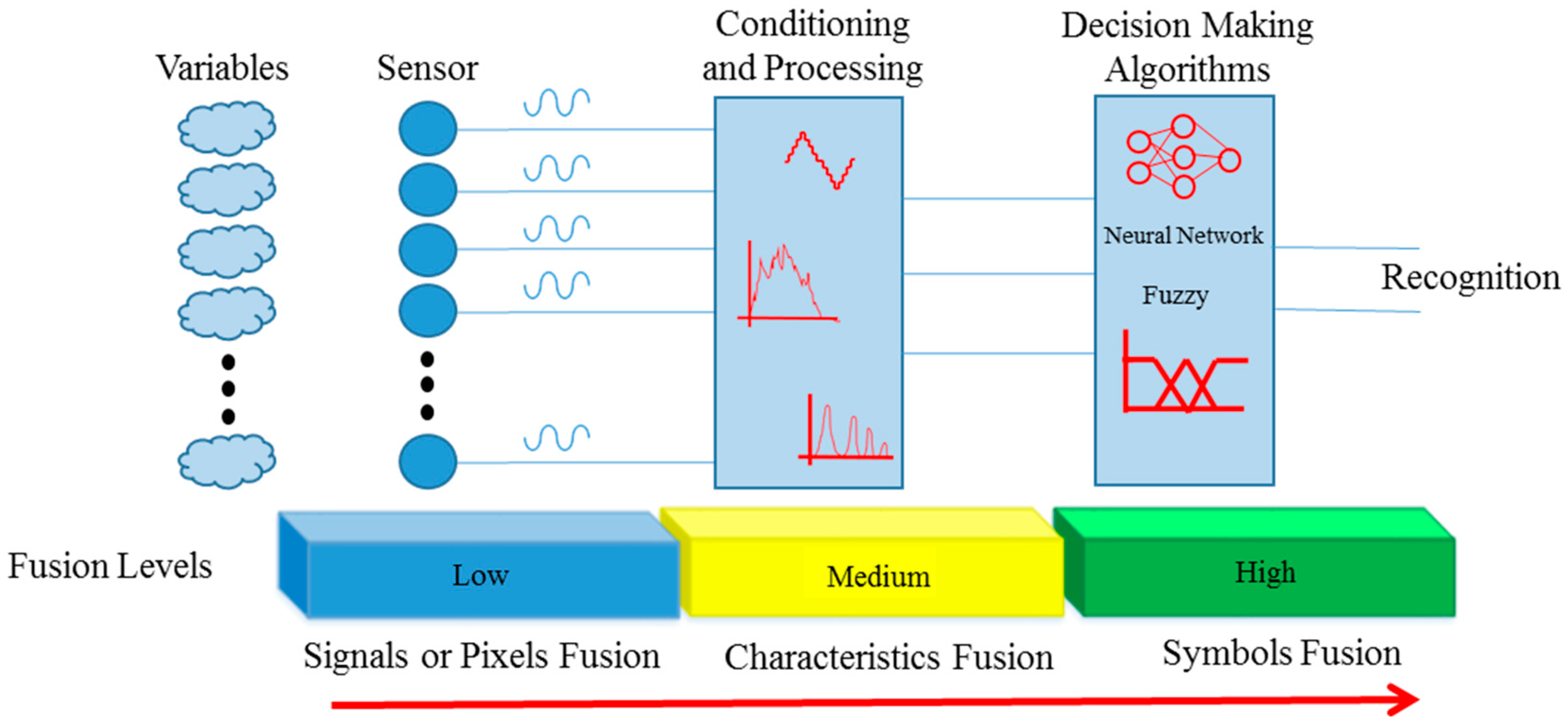
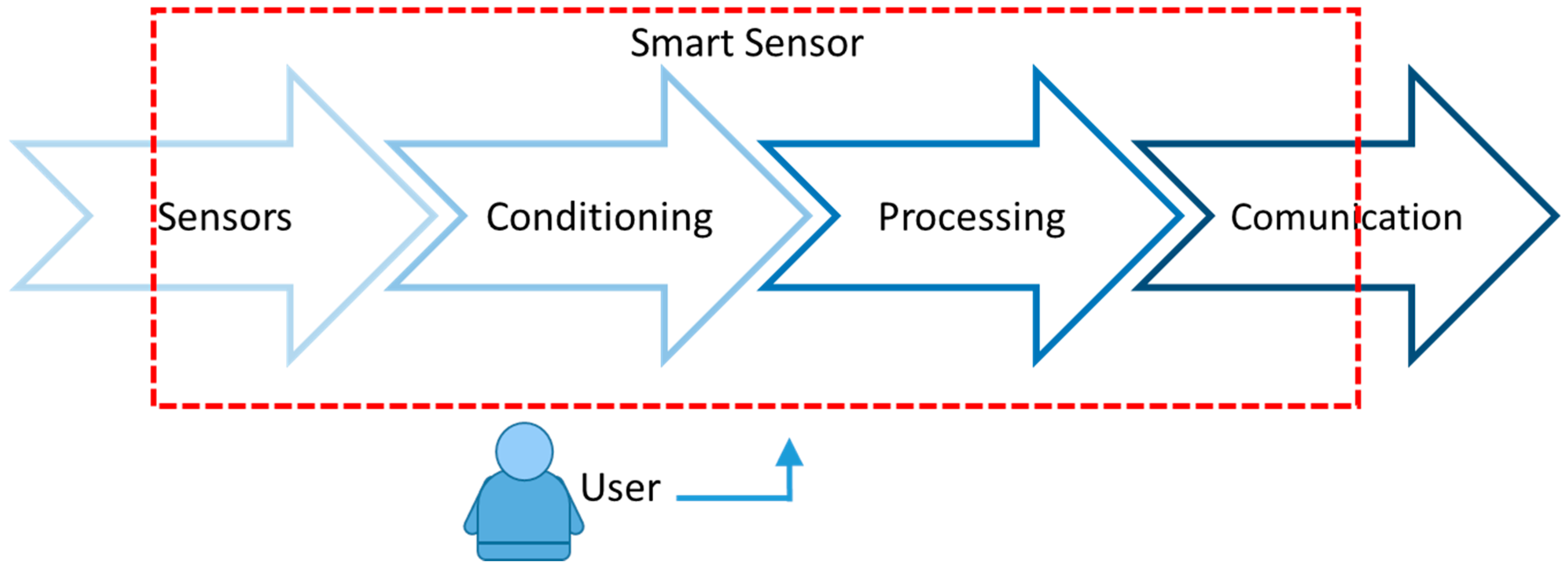

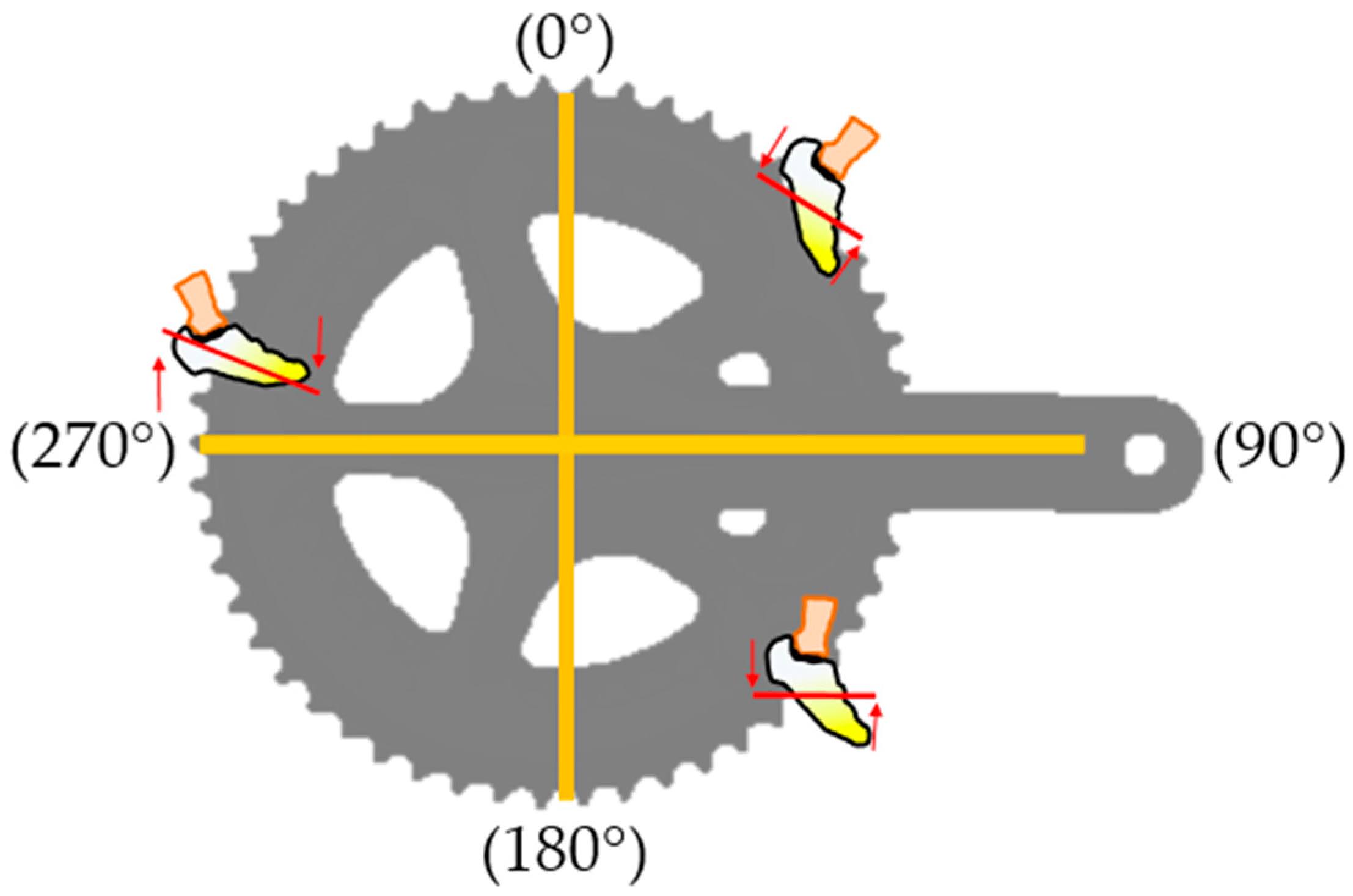

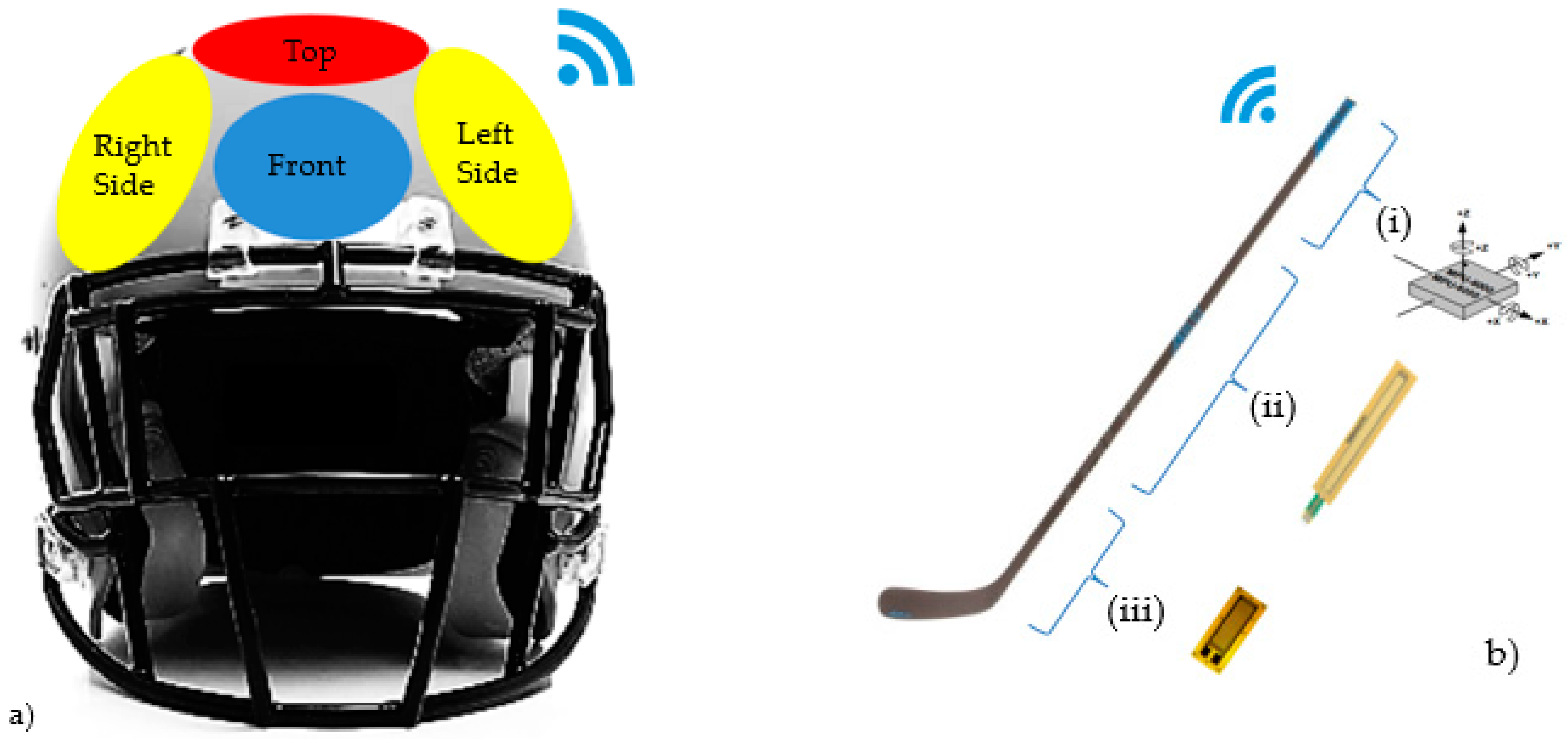
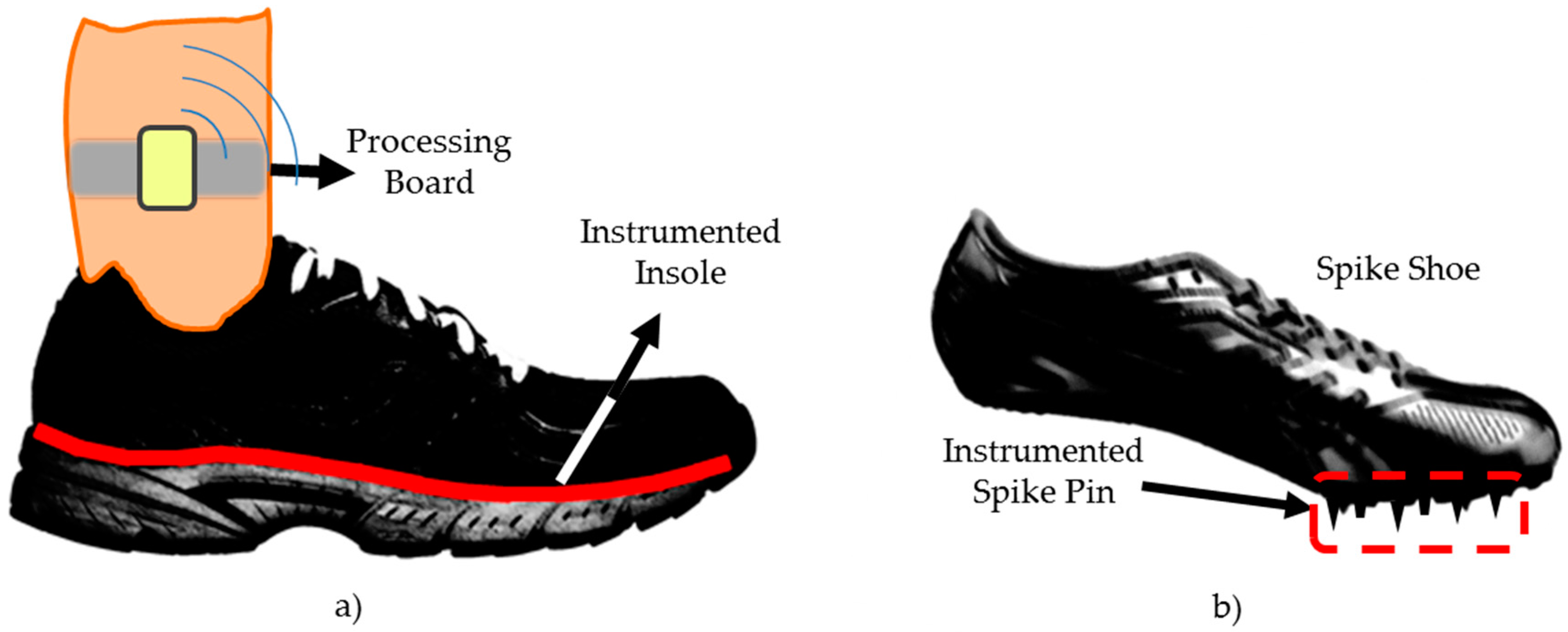



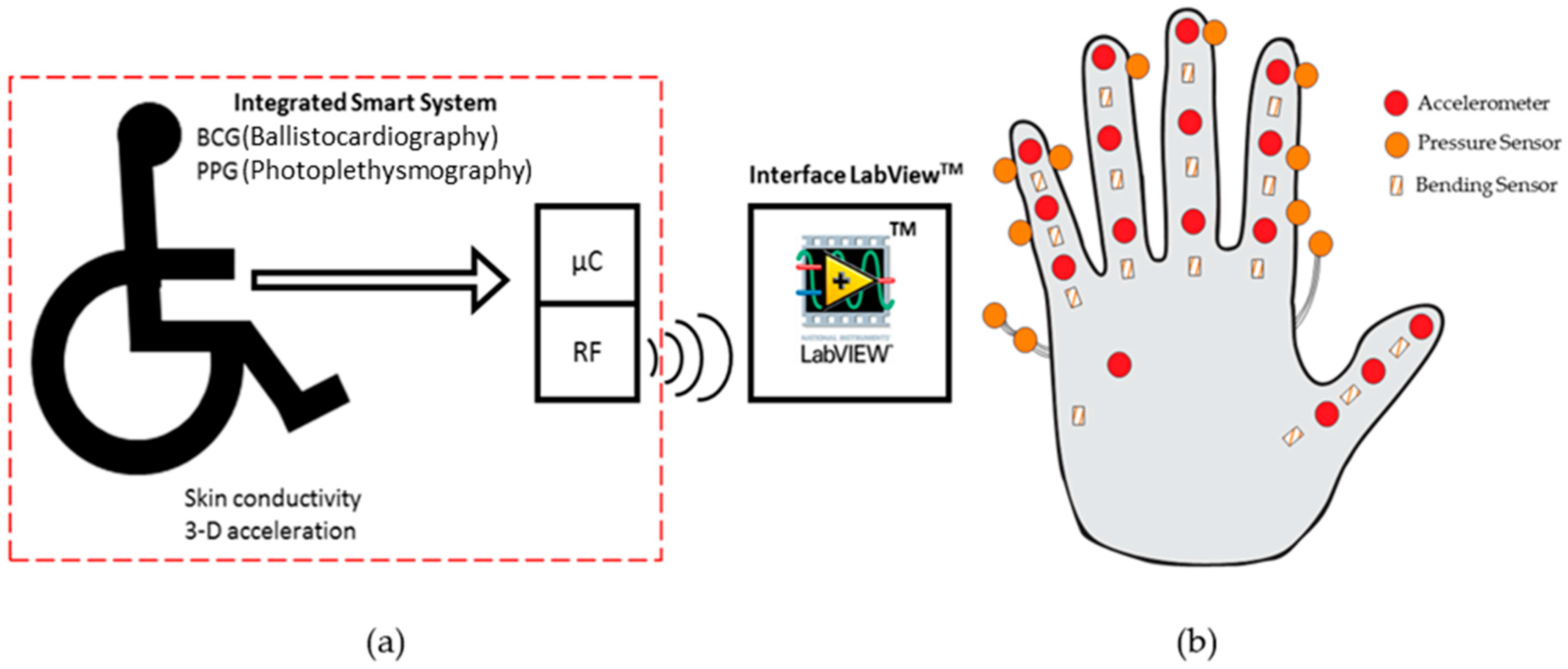
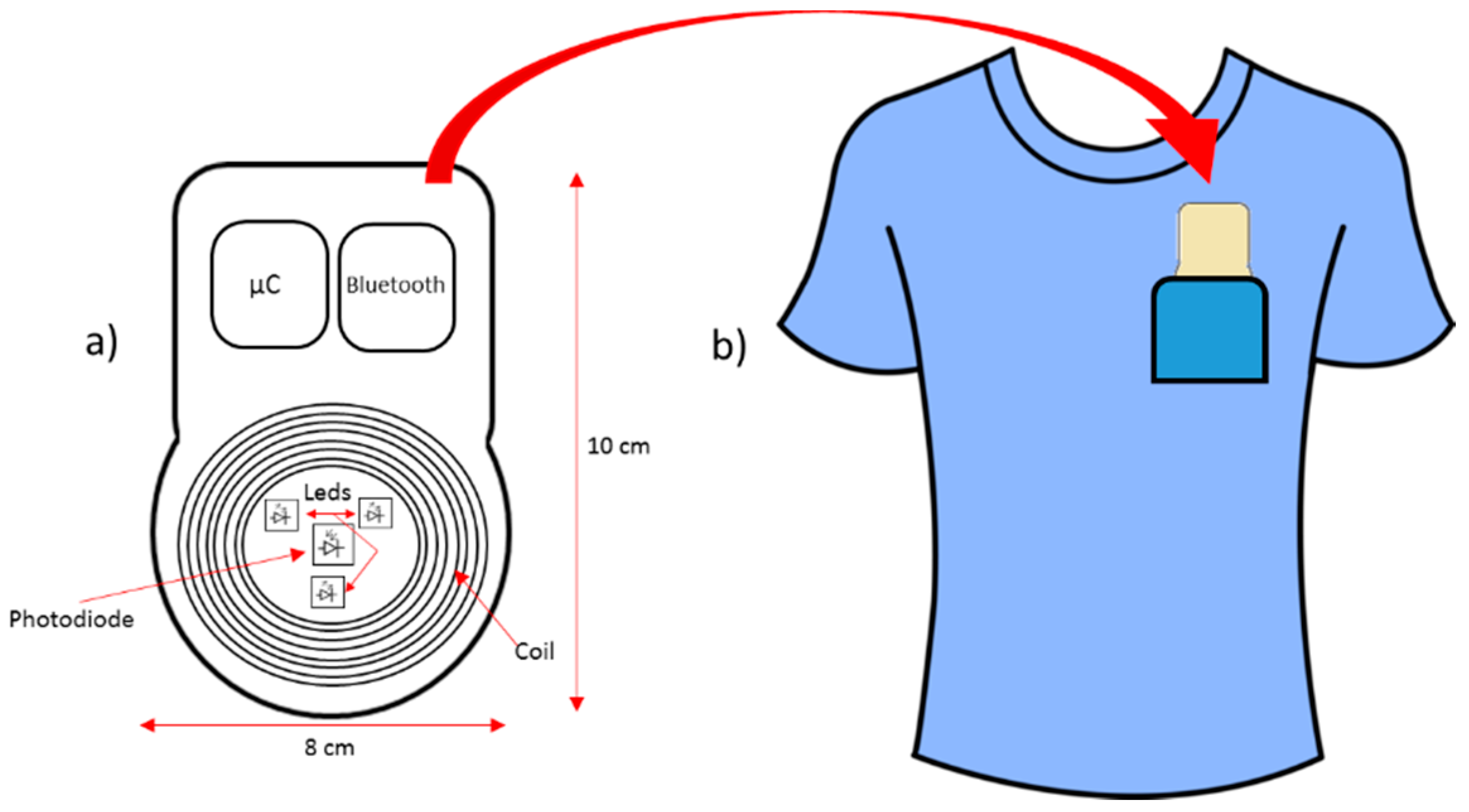
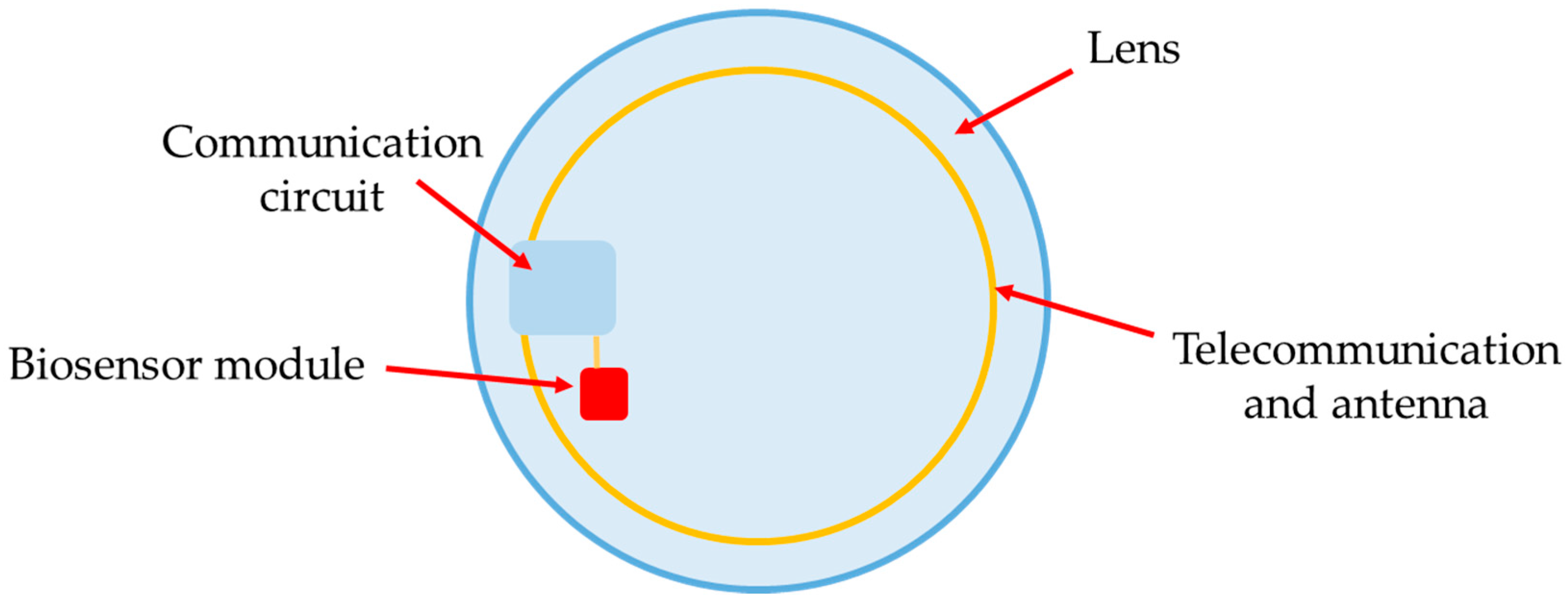


| Sport | Type of Analysis |
|---|---|
| Alpine Skiing [75] | Movement and techniques |
| Tennis [76,77] | Swing and rules (challenge) |
| Snowboard [78,79] | Real-Time feedback of snowboarding |
| Martial Arts (general) [80,81] | Movement and technics |
| Taekwondo [80,82,83] | Movement, technics and rules (system) |
| General Sports [84,85] | Classification of the modality or activity of the sport |
© 2016 by the authors; licensee MDPI, Basel, Switzerland. This article is an open access article distributed under the terms and conditions of the Creative Commons Attribution (CC-BY) license (http://creativecommons.org/licenses/by/4.0/).
Share and Cite
Mendes Jr., J.J.A.; Vieira, M.E.M.; Pires, M.B.; Stevan Jr., S.L. Sensor Fusion and Smart Sensor in Sports and Biomedical Applications. Sensors 2016, 16, 1569. https://doi.org/10.3390/s16101569
Mendes Jr. JJA, Vieira MEM, Pires MB, Stevan Jr. SL. Sensor Fusion and Smart Sensor in Sports and Biomedical Applications. Sensors. 2016; 16(10):1569. https://doi.org/10.3390/s16101569
Chicago/Turabian StyleMendes Jr., José Jair Alves, Mário Elias Marinho Vieira, Marcelo Bissi Pires, and Sergio Luiz Stevan Jr. 2016. "Sensor Fusion and Smart Sensor in Sports and Biomedical Applications" Sensors 16, no. 10: 1569. https://doi.org/10.3390/s16101569






